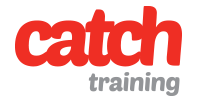FIRST AID – Myths, Facts, and Trivia!
First Aid is a crucial life skill that we should all have – and it’s never too early nor too late in life to learn.
Many thousands of people die every year in situations where, had the right First Aid been given, they’d have potentially survived. This includes people who die from heart attacks, choking, and asphyxiation due to a blocked airway.
First Aid is the immediate but short-term response provided by a bystander in a medical emergency. It is applied to manage an illness emergency or injury until professional medical assistance arrives. There are plenty of misconceptions when it comes to First Aid, many the result of Old Wives’ Tales – but knowledge is power!
Here we will bust some myths, present the facts, and provide some interesting trivia about First Aid!
First Aid Myths & Facts, & Trivia!
- Myth: Apply butter to a burn.
Fact: NO! The grease in butter will not help heal a burn. Severe burns warrant urgent medical attention. Simple burns should be run under cold water and then loosely covered with a light cotton cloth. Burn cream may be beneficial. If a burn blisters, medical advice (GP, pharmacist) is required. - Myth: Suck or squeeze venom from snakebites
Fact: NO! Most snakebites (and life-threatening spider bites) in Australia result in venom spread via the lymphatic system, not the bloodstream. Attempting to suck the venom from the bite will only potentially spread it further and faster – and also into the mouth. Snakebite (and Funnel Web and Mouse Spider bite) First Aid involves immobilisation and applying a pressure bandage over the bite site and down and up the affected limb. Never use a tourniquet for a bite. - Myth: Induce vomiting if a poison has been ingested.
Fact: NO! Certain poisons are caustic and can cause more damage if vomiting occurs. Most poisons have First Aid instructions on their packaging. Follow these and call 000 (in Australia). - Myth: Put a heat pack on sprains.
Fact: NO! While it may feel like warmth will alleviate the pain of a sprain, this will potentially cause the inflammatory response to ramp up and swelling to worsen. Instead, apply a cold/ice pack and seek medical attention to ensure the area is not fractured. - Myth: Tilt the head back for a nosebleed.
Fact: NO! Doing this can result in swallowing blood, which will only make the person nauseous and likely to vomit. Instead, keep the head level or slightly forward and pinch the tip just under the bridge, using a cloth to absorb the bleeding. - Myth: Put the head between the legs to prevent fainting.
Fact: NO! This may result in them falling forward and lead to injury. They should instead lie down with the legs raised above the level of the head. - Myth: Give a shot of alcohol to someone in shock or with hypothermia (extremely cold).
Fact: NO! This only dilates the blood vessels, resulting in further loss of body heat. It can also impinge upon coordination, consciousness, and judgement. Rather, you should remove wet/damp clothing, prevent loss of heat by warming the patient, and add layers of clothing or blankets. - Myth: Put a cold steak on a black eye.
Fact: No! This is a recipe for infection, as the meat could introduce bacteria into any broken skin. What “works” with this old remedy is the cold – so use a cold/ice pack or a packet of frozen peas to help reduce swelling and inflammation.
More Facts & Trivia
- The most common injuries requiring First Aid are generally (but not always) minor, and include cuts and scrapes, burns, insect bites and stings, splinters, sunburn, nosebleeds, sprains and strains, and fractures (broken bones).
- For most spider bites in Australia – but NOT Funnel Web and Mouse spider bites, which require pressure bandaging, immobilisation, and calling 000 – including Redback spider bites, wash the bitten area with soap and water then apply a cold/ice pack for at least 15 minutes. (If you’re unsure what type of spider caused a bite, treat it as if it is a Funnel Web).
- Knowing how to open an airway can save a life – a blocked airway can kill in just three to four minutes.
Did You Know? CPR has been used since 1740 – that’s almost 300 years – but most people still don’t know how to perform it confidently; many don’t know how to do it at all.
First Aid Courses at Catch Training
First Aid Saves Lives!
You too can learn these essential life skills with top-quality First Aid Training at Sydney-based RTO Catch Training. With training centres conveniently located in the Hills District, Blacktown, St Mary’s, Campbelltown, Homebush, and Liverpool.
We offer several First Aid Courses in Sydney (and some of these can be bundled):
- Provide First Aid
- Provide CPR (Cardiopulmonary Resuscitation)
- Provide First Aid in an Education & Care Setting
- Anaphylaxis Refresher
- Mental Health First Aid
- Child Protection Refresher
- Identify and Respond to Children & Young People at Risk
Whether you are an individual, a workplace, a community group, or another type of organisation, we invite you to participate in our First Aid Group Training. We can come to you to deliver this at your location.
Enrol today in First Aid Courses at Catch Training!

